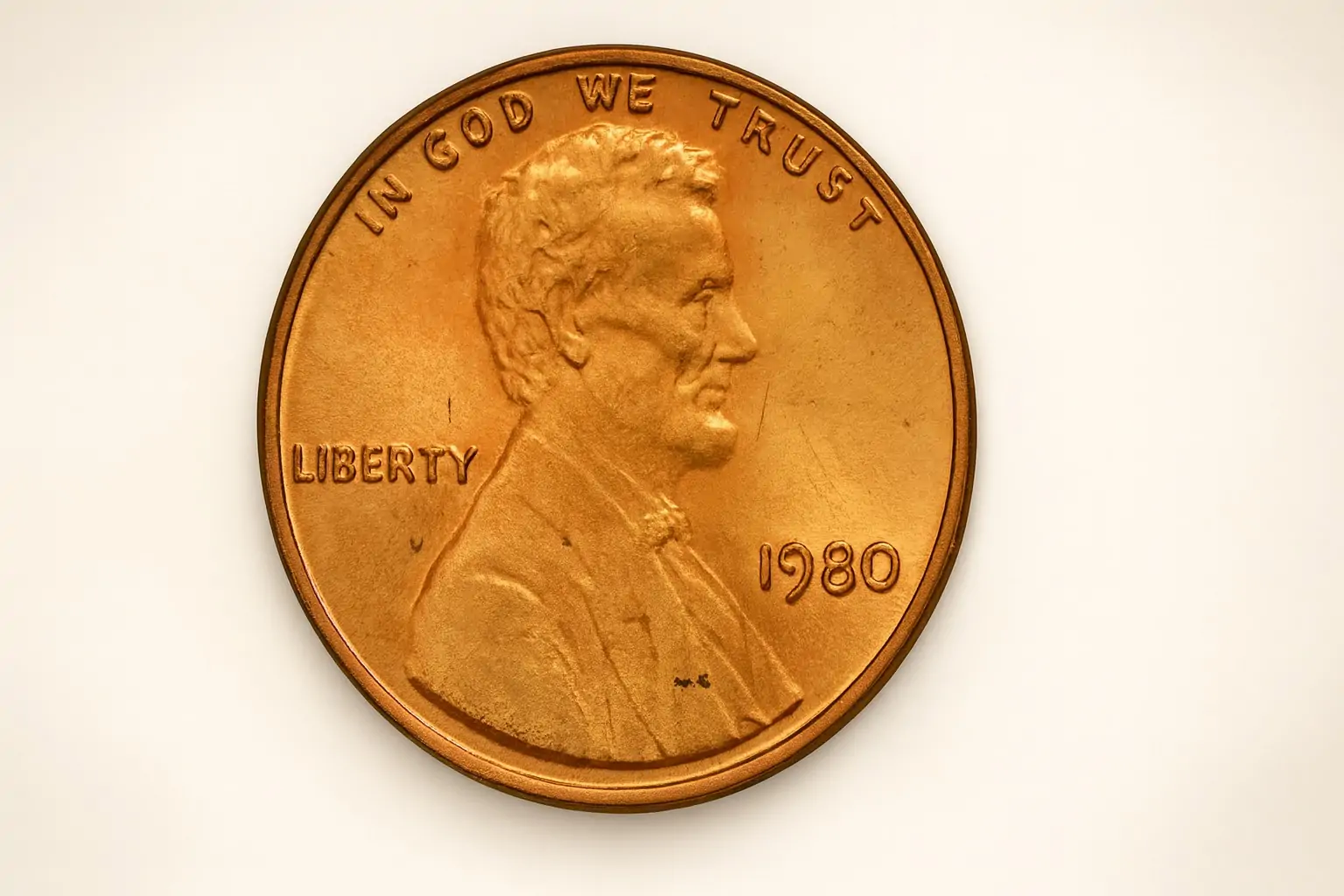Published: November 16, 2025
A 232‑Year‑Old Coin Finally Stops Making “Cents”
On November 12, 2025, the U.S. Mint in Philadelphia struck the final circulating penny, closing the book on more than 230 years of one‑cent coins in American pockets and cash drawers. [1]
The ceremony came after President Donald Trump ordered the Treasury in February to stop minting new pennies, arguing the coin was “wasteful” because each one now costs about 3.7 cents to produce — nearly four times its face value. Treasury officials estimate that ending production will save roughly $56 million a year. [2]
For now, the penny remains legal tender. Hundreds of billions of existing coins will stay in circulation and can still be used in everyday transactions, even as banks start rationing pennies and some retailers experiment with rounding to the nearest five cents. [3]
But as of this week, the symbolic end of the penny isn’t the only story. A handful of ultra‑rare “last” pennies are poised to ignite a multimillion‑dollar bidding war — and policymakers, economists and retailers are already asking: Is the nickel next?
The Final Five “Omega” Pennies: Tiny Coins, Huge Money
At Wednesday’s ceremony in Philadelphia, U.S. Treasurer Brandon Beach pressed the button that struck the final five circulating pennies, each bearing a special Omega mark to identify them as the last of their kind. [4]
Those five coins are part of a broader farewell run:
- 232 Omega‑stamped copper pennies for auction — one for each year the penny has existed.
- 3 additional Omega pennies reserved for display at Treasury and other institutions.
- 235 special gold pennies, also destined for collectors. [5]
All proceeds from the auctions will fund Mint operations, with any surplus sent to the U.S. Treasury. [6]
How much could they sell for?
Here’s where the estimates diverge:
- Some numismatic experts quoted by Fox Business say each of the final five Omega pennies could fetch between $2 million and $5 million at auction. [7]
- The U.S. Mint’s own internal projections, according to Reuters, are far more conservative: officials suggested the first and last coins in the broader Omega batch might sell for around $100,000 apiece. [8]
The New York Post, citing coin dealers, reported this morning that the most coveted final penny might still hit the $5 million mark, while others in the final batch could land closer to six figures or less. [9]
Not everyone is buying the hype. Veteran dealers warn that these are “manufactured rarities” — coins struck specifically to be scarce, rather than survivors from centuries past — and that prices could cool once the initial frenzy passes. [10]
Even skeptics concede one point: for any collector trying to assemble a “complete” set of U.S. pennies, one of those Omega coins just became the most important — and most expensive — missing piece.
Why the Penny Had to Go: The Math Stopped Working
The penny has been on fiscal life support for years. The numbers driving its demise are straightforward:
- Unit cost (2024): about 3.7 cents to mint a single one‑cent coin.
- Annual loss: tens of millions of dollars a year in negative seigniorage (the gap between production cost and face value). [11]
- Production dominance: pennies made up roughly 57% of all circulating coins minted in fiscal 2024 (about 3.2 billion out of 5.61 billion). [12]
Meanwhile, the coin’s real‑world usefulness has steadily eroded. Inflation means a single cent now buys virtually nothing, and Americans notoriously hoard pennies in jars and drawers instead of recirculating them, forcing the Mint to churn out billions more each year just to keep tills stocked. [13]
The U.S. is also catching up with other countries that scrapped low‑value coins years ago. Canada dropped its penny in 2013; Australia, New Zealand, Ireland and others phased out their smallest denominations and switched to rounding cash totals to the nearest five cents. [14]
In that context, the penny simply became what one legal analysis this fall called a “negative‑value artifact” — a coin worth less than the metal and effort it takes to make it. [15]
What the End of the Penny Means for Shoppers and Stores
Despite the dramatic headlines, economists generally expect only tiny changes for most consumers.
Rounding rules and the “rounding tax”
As pennies disappear, more cash transactions will be rounded to the nearest nickel. A common approach — already used in Canada — is: [16]
- Totals ending in 1, 2, 6 or 7 cents → rounded down
- Totals ending in 3, 4, 8 or 9 cents → rounded up
- Totals ending in 0 or 5 → no rounding
Using a large Federal Reserve dataset of real consumer payments, economists at the Richmond Fed estimated that this rounding would cost U.S. shoppers about $6.06 million per year nationwide — a relatively small figure compared with the roughly $56 million taxpayers save annually by not minting pennies. [17]
In other words, the average person is unlikely to notice more than a few cents a year in difference, at least if rounding rules are applied fairly.
Retailers: short‑changed on guidance
Retailers are having a tougher time.
- Weeks before the final penny was pressed, some Federal Reserve coin centers had already stopped filling orders for pennies, leaving banks and cash‑heavy businesses scrambling. [18]
- Chains ranging from gas stations to big‑box stores have begun rounding in favor of the customer when they run out of pennies, effectively absorbing the difference as a cost of doing business. [19]
- Several states and cities — including some with strict consumer‑protection rules on exact change — still legally require precise pricing, making ad‑hoc rounding a legal gray area. [20]
Trade groups such as the National Retail Federation and convenience‑store associations have urged Congress to pass clear national rules for cash rounding, warning that without them, “it will be challenging to legally engage in cash transactions with customers in growing swaths of the country.” [21]
The “Common Cents Act”
One proposed fix, the bipartisan Common Cents Act, would:
- Formally end production of pennies for circulation
- Require cash transactions to be rounded to the nearest five cents
- Allow the Mint to continue producing limited‑run pennies for collectors if those sales cover their costs [22]
The bill has not yet been signed into law, but it’s shaping the debate about how America should handle not just pennies, but the future of small‑change coins in general.
Is the Nickel Next on the Chopping Block?
Today’s CNN Business coverage — echoed by earlier Treasury and Federal Reserve research — highlights the awkward reality behind the celebration over penny savings: the nickel is an even worse deal for taxpayers. [23]
Key numbers:
- Cost to mint a nickel (2024): about 13.8 cents per 5‑cent coin
- Annual nickel loss: roughly $17.7 million in 2024
- Result: the government loses about $1.75 for every $1 issued in nickels. [24]
Now that pennies are gone, cash drawers will rely more heavily on nickels to make change. That raises an obvious question: why keep minting a coin that’s even more unprofitable than the penny?
What’s being discussed — and what isn’t (yet)
So far, the Treasury has only halted penny production for circulation. Eliminating the nickel outright would require fresh political will and likely new legislation. [25]
Still, ideas that once seemed fringe are now part of mainstream debate:
- Economists and think‑tank papers have argued for stopping both penny and nickel production, keeping the dime as the lowest‑value coin. [26]
- A January research brief from the Richmond Fed warns that removing the nickel as well as the penny would significantly increase the rounding burden on consumers, since cash transactions would then be rounded to the nearest dime instead of the nearest nickel. [27]
- Earlier this year, a Congressional Research Service note outlined a bill to suspend both penny and nickelproduction for ten years while the Government Accountability Office studies the impact. [28]
For now, there is no formal timetable to kill the nickel. But the numbers are clear enough that most analysts expect the five‑cent coin to face intensifying scrutiny now that its smaller copper cousin is gone.
A Coin Obituary: The Penny’s Cultural Legacy
The end of the penny isn’t just an accounting tweak; it’s a small cultural shock.
In an obituary‑style feature published this week, The New York Times wrote that “The American penny died on Wednesday in Philadelphia. It was 232,” describing the cause of death as irrelevance and expense. [29]
That obituary captures how deeply the one‑cent coin is woven into American language and habits:
- “A penny for your thoughts”, “pennies from heaven”, “pinching pennies” — idioms that have outlived the coin’s usefulness. [30]
- Lincoln’s profile, on the coin since 1909, made the penny the first U.S. coin to feature a president. [31]
- For generations of kids, pennies were the starting point of piggy banks, allowance jars and school charity drives. [32]
Culturally, many people feel as though the Mint didn’t just end a coin; it quietly retired a symbol of frugality and everyday thrift.
What You Should Do With Your Pennies Now
If you’re staring at a jar of loose change and wondering whether you’re sitting on a fortune, here’s the practical picture.
1. Keep some as history
The vast majority of pennies will never be worth more than a cent, especially modern zinc coins. But keeping a small roll of 2025‑dated pieces — or earlier curiosities like all‑copper pre‑1982 cents — is an inexpensive way to hold onto a bit of monetary history. [33]
2. Check for obvious rarities
If you want to hunt for value, focus on:
- Older key dates (especially 19th‑century or low‑mintage years)
- Error coins with visible misstrikes or off‑center designs
- High‑grade, uncirculated examples in original rolls
Professional grading and authentication are essential before assuming any big price tag — and speculative buying always carries risk. [34]
3. Spend, roll or deposit them
Pennies will remain legal tender for years. You can:
- Use them to pay in exact change
- Roll them and bring them to the bank
- Feed them into coin‑counting machines (where available)
Given that the Mint expects pennies to last roughly 30 years in circulation on average, there’s no need to panic — but banks may gradually stop giving them back once their existing stock runs down. [35]
4. Donate jars to charity
Many charities that once ran “penny drives” are now rebranding them as generic coin or small‑change drives, but they’re still happy to accept rolled or loose pennies. It’s a simple way to clear out a heavy jar and turn it into something useful. [36]
Small Change, Big Questions
Four days after the last penny rolled off the presses, the United States has not descended into chaos. Most people still pay electronically; cash transactions are quietly being rounded; and the sun continues to rise on a world where one cent no longer matters much on its own.
Yet the end of the penny opens up bigger questions:
- How far should the U.S. go in trimming physical currency that no longer makes economic sense?
- Can policymakers protect cash‑reliant, low‑income households as more value is squeezed from coins and notes?
- And if the nickel’s economics are even worse than the penny’s, how long can it avoid the same fate? [37]
For now, the penny’s obituary is written, its last ceremonial cousins are headed for the auction block, and the nickel has quietly stepped into the spotlight as America’s next big “small” change debate.
References
1. www.reuters.com, 2. people.com, 3. www.reuters.com, 4. www.reuters.com, 5. www.reuters.com, 6. www.reuters.com, 7. www.foxbusiness.com, 8. www.reuters.com, 9. nypost.com, 10. nypost.com, 11. www.euronews.com, 12. www.reuters.com, 13. www.euronews.com, 14. www.reuters.com, 15. www.hklaw.com, 16. www.richmondfed.org, 17. www.richmondfed.org, 18. www.reuters.com, 19. www.reuters.com, 20. time.com, 21. www.reuters.com, 22. en.wikipedia.org, 23. www.aol.com, 24. www.richmondfed.org, 25. www.reuters.com, 26. papers.ssrn.com, 27. www.richmondfed.org, 28. www.congress.gov, 29. www.securitiesdocket.com, 30. www.magzter.com, 31. www.reuters.com, 32. www.britannica.com, 33. www.britannica.com, 34. nypost.com, 35. www.reuters.com, 36. www.britannica.com, 37. www.richmondfed.org










